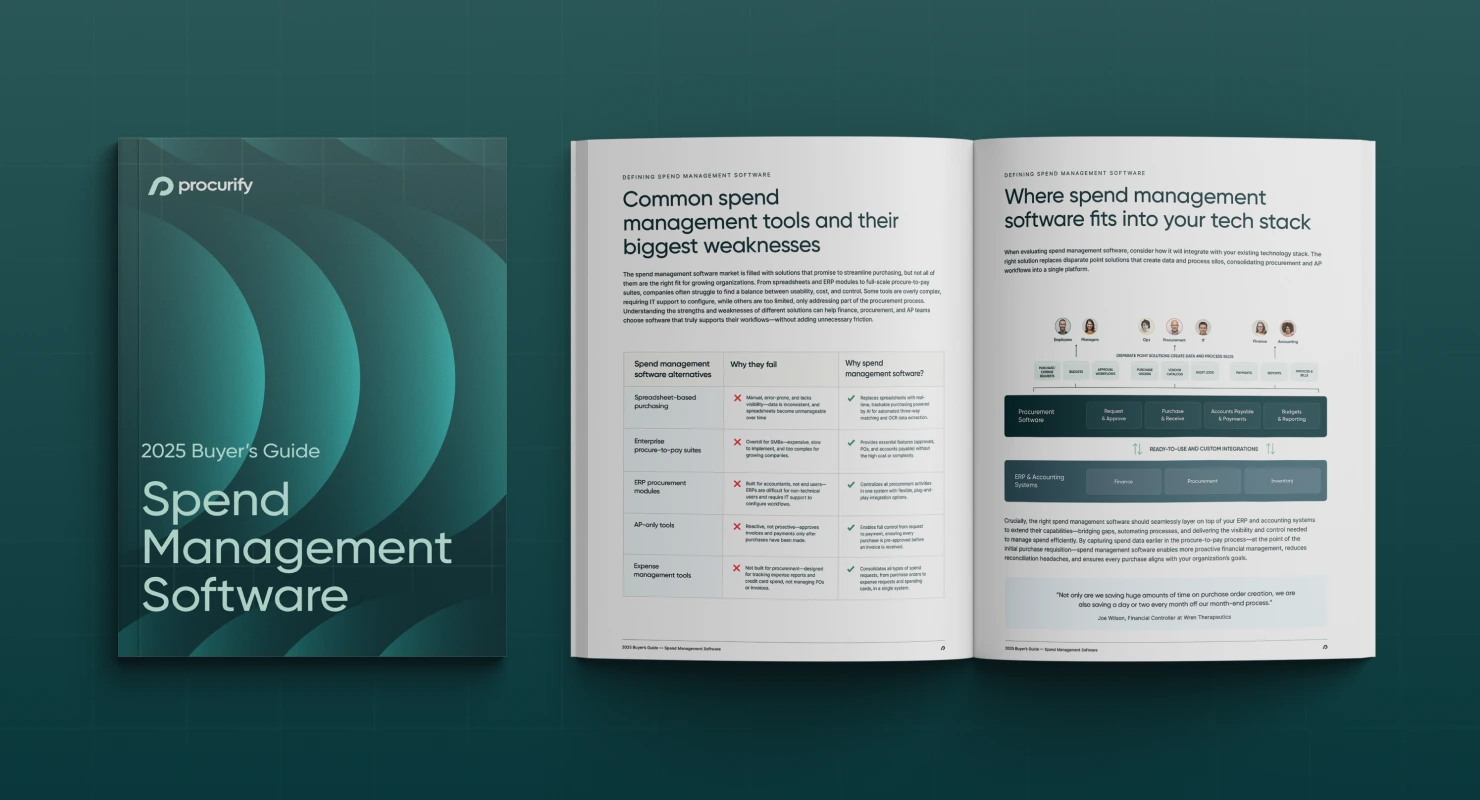Empowered by Procurify
Trusted by 600+ customers — and counting
— to manage over $25B in spend.
We love the procurement process – so much so, in fact, that we’re constantly developing and improving our purchasing software to ensure users entrench the best possible procurement processes in their business.
But establishing a solid procurement process is a layered, nuanced project: a business must establish a vibrant procure-to-pay system (aided, I would argue, by an e-procurement solution) as well a distinct procurement system policy framework.
So, what is a procurement system policy framework?
Simply speaking, it is a set of simple expectations that any procurement function should consider, to ensure the effectiveness of their respective procurement department.
Of the myriad questions a procurement function could ask (and, I’m sure, there are many), consulting giant EY has cobbled together a concise list of considerations for any procurement system policy framework.
EY’s list:
• Have a detailed spend map, updated quarterly, across your entire organization.
• Be a driver of sustainable savings (when, where, why and how) across your entire organization.
• Be engaged with the wider firm to understand how procurement can reduce costs across the value chain. How can procurement help other departments?
• Ensure that value is realized through contract management and supplier relationship management frameworks.
• Be delivering procurement within an operating model that connects commercial and technical capability to drive optimal client outcomes.
Details, details…
A great list, to be sure. But…what does it all mean?
Glad you asked!
Detailed spend map
A detailed spend map is, you guessed it, just what it sounds like: a clear, thorough list of all the spending that is being done in an organization. A spend map should include – total spend of the company, what is being purchased (and for how much), which vendors supply which products and which departments routinely buy the same (or similar) goods and services, amongst other details.
A detailed spend map cannot be overstated when building a procurement systems policy framework. Without clear visibility into how much your company is spending (and what your company is spending money on), producing an inspired, efficient procurement function will be difficult.
Drive sustainable savings
Key word – “drive.”
The procurement function cannot be the only department responsible for finding savings in a company. Putting such pressure on the collective shoulders of one department is a plan that will fail. Rather, the procurement function should become facilitators of various savings initiatives throughout an organization.
This is somewhat difficult – after all, you are depending on the participation of everyone in the company to help find savings. But while difficult, transforming your procurement function into “drivers” of savings is a critical plank of a procurement softwares policy framework.
Finding savings across the value chain
Is a price reduction on your contracts the only potentials savings you’ve outlined? If so, you’re missing out on numerous money-saving avenues.
For instance, an organization could consider:
• Eliminating demand
• Reviewing volume requirements
• Reducing demand frequency
• Reducing portfolio range and complexity
Examine your entire demand chain – you’ll be surprised where savings can be found. The above list is, to say the least, an abridged one. Are there other places in the demand chain you can look for savings? Possibly. But to guarantee you’re always looking, ensure an examination of your demand chain is part of your procurement systems policy framework.
Contract and supplier relationship management
How do you handle your contracts once they’re signed? Do you ensure either party involved remains happy, or do you forget all about it and move on?
Do you maintain an open and productive relationship with your suppliers? Do you discuss changes and fluctuations in the market with your suppliers?
If your answer to either of the aforementioned questions is “no,” then you have to re-think your contract management process and ensure such analysis is part of procurement system policy framework. An effective supplier management process must support risk, effort and reward, as they apply to each individual contract your firm has.
Connect commercial and technical capability
This is a question of talent within your procurement function – do those involved have the talent to succeed? And does your procurement function have a clear set of expectations?
If not, then you must design some rules and expectations for your procurement function (and include them in your procurement system policy framework, of course) so your employees have goals to work toward.
Some expectations for your procurement function:
• Strategy: designing vision, objectives, strategies and performance expectations for your procurement function.
• Governance: designing how the executive team will oversee the procurement function.
• Organization: designing the roles and responsibilities of those involved in the procurement function.
• Procurement value chain: determining what other processes in the organization support the procurement function.
• Reporting: determining what information is critical to managing third party spend.

2025 Spend Management Software Buyer’s Guide
Choose the spend management solution best suited to your organization’s needs with an overview of the 2025 software ecosystem, feature comparisons, and a free vendor capability evaluation checklist.
